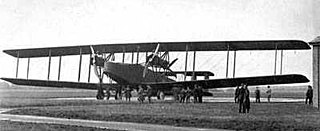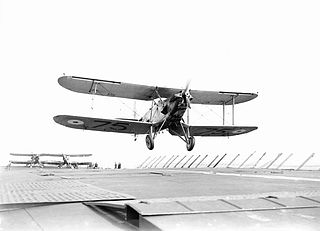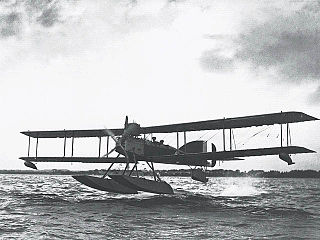The AD Seaplane Type 1000 also known as the Admiralty Type 1000 and the AD.1 was a British seaplane of the First World War designed to attack German warships. When it first flew, it was the largest British aircraft yet to take to the air.

The Handley Page V/1500 was a British night-flying heavy bomber built by Handley Page towards the end of the First World War. It was a large four-engined biplane, which resembled a larger version of Handley Page's earlier O/100 and O/400 bombers, intended to bomb Berlin from East Anglian airfields. The end of the war stopped the V/1500 being used against Germany, but a single aircraft was used to carry out the first flight from England to India, and later carried out a bombing raid on Kabul during the Third Anglo-Afghan War. It was colloquially known within the fledgling Royal Air Force as the "Super Handley". The V/1500 which was shipped to Canada to attempt a transatlantic flight was flown in the US, and in 1919 crash-landed in a field at Mount Jewett, Pennsylvania. Photos appeared in the 20 February 1969 issue of the Bradford Journal newspaper.

The Blackburn T.5 Ripon was a British carrier-based torpedo bomber and reconnaissance biplane which first flew in 1926. It was used by the Fleet Air Arm as a torpedo bomber from 1930 until 1935. Ripons were also sold to Finland, where they continued to be used in action in the Winter War and the Continuation War until 1944.

The Short Admiralty Type 184, often called the Short 225 after the power rating of the engine first fitted, was a British two-seat reconnaissance, bombing and torpedo carrying folding-wing seaplane designed by Horace Short of Short Brothers. It was first flown in 1915 and remained in service until after the armistice in 1918. A Short 184 was the first aircraft to sink a ship using a torpedo, and another was the only British aircraft to take part in the Battle of Jutland.

The Short Bomber was a British two-seat long-range reconnaissance, bombing and torpedo-carrying aircraft designed by Short Brothers as a land-based development of the very successful Short Type 184.

The Avro 510 was a two-seat racing seaplane designed by Avro to compete in the 1914 Circuit of Britain Race. It was a conventional two-bay biplane of greatly uneven span, equipped with two large central floats and two outriggers. The race was called off at the outbreak of the First World War, but the British Admiralty was aware of the type and ordered five examples, with modified floats and tail. In service, these proved completely unsuitable, and it was discovered that with a second person aboard, the aircraft could barely fly. In October 1915, the 510s in service were sent to Supermarine for modification and improvement, but by March the following year all were removed from service.
The Avro 519 was a British bomber aircraft of the First World War, a development of the Avro 510 seaplane. They were two-bay biplanes of conventional configuration with greatly uneven span. Two single-seat examples, powered by a single 150 hp (110 kW) Sunbeam water-cooled engine, were ordered by the RNAS in early 1916. This was soon followed by orders for two modified aircraft for the Royal Flying Corps. These were fitted with seats for a crew of two and had more powerful (225 hp/168 kW) Sunbeam engines

The Avro 523 Pike was a British multi-role combat aircraft of the First World War that did not progress past the prototype stage. It was intended to provide the Royal Naval Air Service with an anti-Zeppelin fighter that was also capable of long-range reconnaissance and bombing.

The Wight Converted Seaplane was a British twin-float patrol seaplane produced by John Samuel White & Company Limited.

The Wight Pusher Seaplane, or Navyplane, was a British twin-float patrol seaplane produced by John Samuel White & Company Limited.
The Short Admiralty Type 74 was a single-engined biplane tractor seaplane with non-folding wings, which saw service with the Royal Naval Air Service during the First World War.

The Airco DH.3 was a British bomber aircraft of the First World War. The DH.3 was designed in 1916 as a long-range day bomber by Geoffrey de Havilland, chief designer at the Aircraft Manufacturing Company. It was a large biplane with wide-span three-bay wings, slender fuselage, and a curved rudder. It was powered by two 120 hp (89 kW) Beardmore engines, mounted as pushers between the wings. In addition to tailskid landing gear, two wheels were placed beneath the nose to prevent bumping.

The Supermarine Sea King was a British amphibious biplane fighter designed and built by the Supermarine Aviation Works in 1920.
The Supermarine Baby was a British flying boat fighter aircraft of the First World War designed and built by the Supermarine Aviation Works. Although only one was built, it formed the basis for the later Sea King fighter and Sea Lion I racer.

The Sopwith Admiralty Type 860 was a 1910s British biplane seaplane torpedo bomber designed and built for the Admiralty by the Sopwith Aviation Company.

The Short Type 827 was a 1910s British two-seat reconnaissance floatplane. It was also known as the Short Admiralty Type 827.
The Beardmore W.B.1 was a British single-engine bomber biplane of World War I developed by Beardmore.

The Short Type 320, also known as the Short Admiralty Type 320, was a British two-seat reconnaissance, bombing and torpedo-carrying "folder" seaplane of the First World War.

The Norman Thompson N.T.2B was a British single-engined flying boat trainer of the First World War. A single-engined biplane, the N.T.2B was adopted as a standard flying boat trainer by the Royal Naval Air Service, training pilots for larger patrol flying boats such as the Felixstowe F.2.
The Grahame-White Ganymede was a prototype British heavy night bomber intended to serve with the Royal Air Force in the First World War. A large, three-engined, twin-boom biplane, the sole prototype Ganymede did not fly until after the war had ended, and although an attempt was made to convert the aircraft to an airliner, it was unsuccessful.














